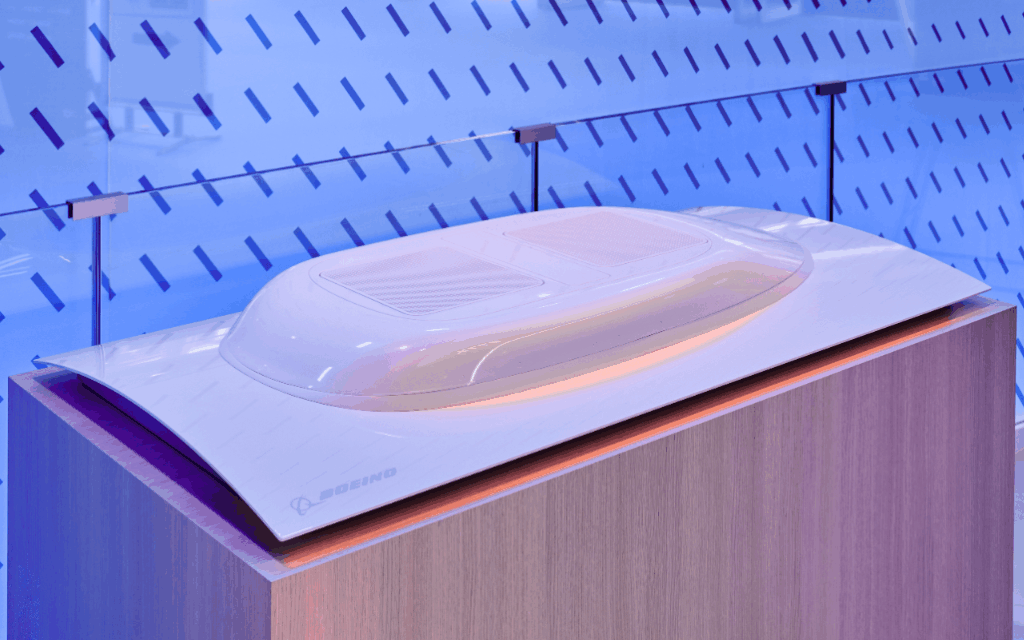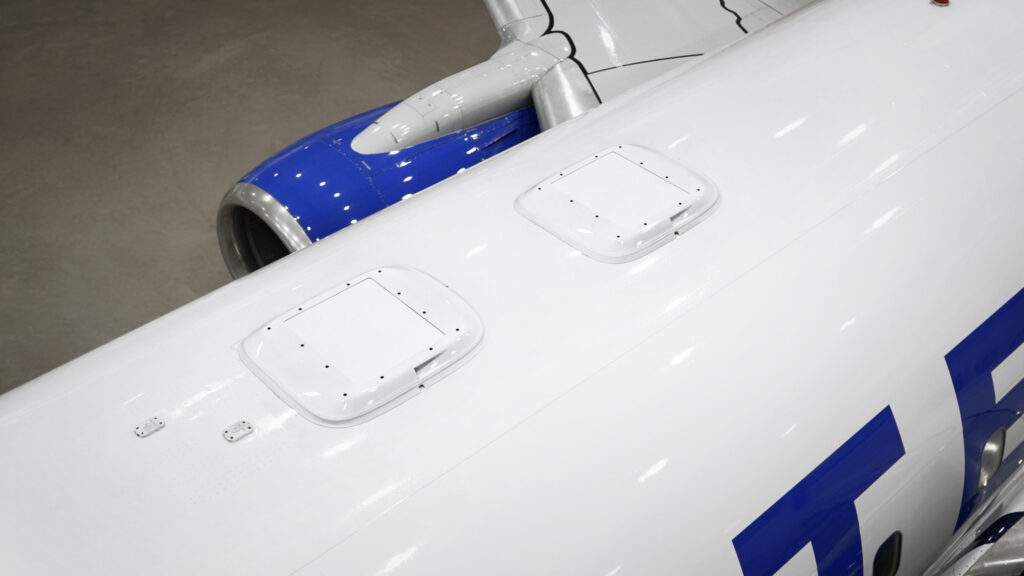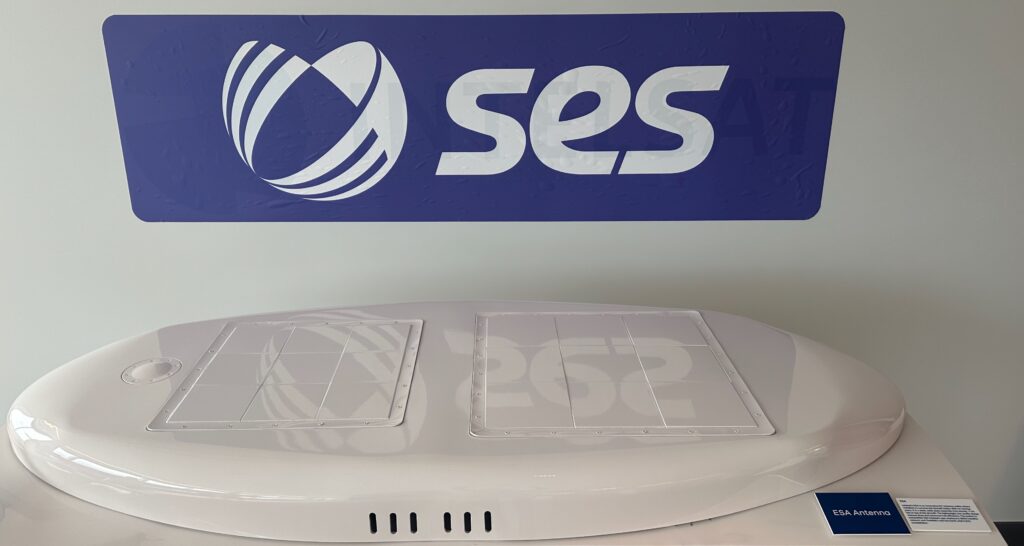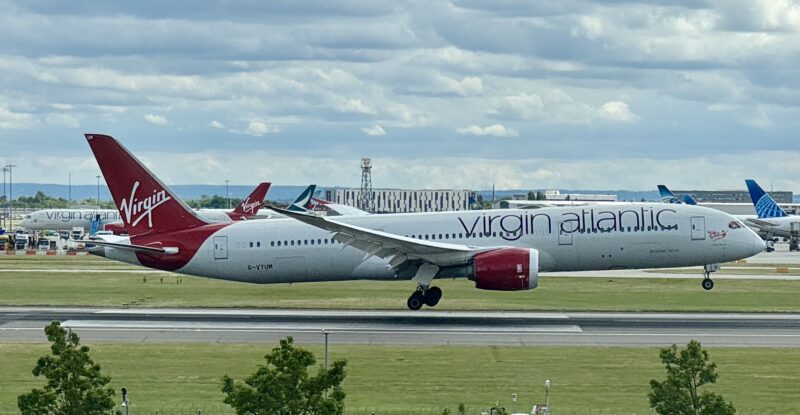Boeing knows a thing or two about electronically steerable antennas (ESAs). For nearly 30 years, it has been designing, qualifying and delivering active phased array systems to support aeronautical communications including for the U.S. military.
At the dawn of the 21st Century, Boeing Commercial Airplanes adopted a phased array antenna for its Connexion by Boeing Ku-band geostationary satellite-based inflight connectivity service before pivoting to a reflector antenna. And long after Boeing shuttered Connexion in 2006, the original phased array antenna could still be spotted atop the fuselage of Air Force One (though it was understood to operate in receive-only mode).
Now as non-geostationary satellite services disrupt the inflight connectivity sector, and airlines move to adopt Low Earth Orbit (LEO) and multi-orbit satellite solutions, Boeing has developed new technology to ensure that ESAs can be efficiently integrated with Boeing aircraft, including notably the 787 which has unique post-delivery retrofit requirements due to its composite airframe.
The so-called Boeing Aerodynamic Shroud, a scaled model of which was on display at this year’s Aircraft Interiors Expo in Hamburg, “is a new antenna fairing designed to accommodate the next generation of electronically steered phased array antennas that support LEO and multi-orbit suppliers,” Boeing explains. “The fairing is optimized for operational and maintenance efficiency and will be available for both linefit and retrofit.”
Of note, the new Boeing Aerodynamic Shroud “was designed to accommodate a range of modern antenna solutions, and up to two ESA antennas,” Boeing vice president, cabin, modifications and maintenance Doug Backhus tells Runway Girl Network.
The Shroud is also optimized for thermal protection and what Boeing assures will be “superior heat dissipation” and it fits the Triband adapter plate footprint long used by the airframer to support radome-capped gimbaled- and mechanically steered phased array-antenna installs. In short, it is compatible with existing connectivity provisions, which are in fact a throwback to the Connexion days (the configuration decided after Boeing’s pivot to mechanical.)
A radome-free design, the Boeing Aerodynamic Shroud also “maintains unobstructed line-of-sight for reliable data transmission,” Boeing says.
This is the Shroud in which Gilat’s Stellar Blu multi-orbit ESA will be housed when Boeing starts delivering 737s linefit with the kit in 2026 to support SES’s multi-orbit IFC service for Japan Airlines and Skymark, and later in support of Panasonic Avionics’ own LEO/GEO service in 2027. And it is where SpaceX’s phased array antennae will be housed to power Starlink LEO service including on the 787.

A 50% scale mock-up of the Boeing Aerodynamic Shroud as Boeing displayed at AIX 2025. Image: Boeing
Virgin Atlantic, which recently announced plans to bring Starlink to its entire fleet including its 787-9s, is the first publicly disclosed airline to reach an agreement to implement Boeing’s connectivity modifications across its existing fleet of 787s as part of a services agreement announced at the MRO Europe exhibition in London.
Under its agreement with Virgin Atlantic, Boeing Global Services will install the Boeing Aerodynamic Shroud on the airline’s 787s, as part of its modifications. Starlink will replace Panasonic Avionics’ legacy Ku-band IFC system which uses a gimbaled antenna and the Boeing Triband radome.
“We’re witnessing rapid advances in satellite and antenna technology, and we’re proud to provide our OEM-backed engineering expertise and hardware that will enable Virgin Atlantic to bring faster, more reliable connectivity to their 787 Dreamliner fleet,” says Backhus.
SpaceX favors a two-antenna configuration on large aircraft — as lately evidenced by United Airlines’ retrofit of Starlink to a Boeing 737-800. A second adapter plate and ergo, a second and separate antenna install shouldn’t be needed to facilitate Starlink’s two-antenna design on Virgin’s 787-9s, given that the Boeing Aerodynamic Shroud accommodates two ESAs, but it will be interesting to see what configuration ultimately breaks cover.

Two Starlink phased array antennas atop a retrofitted United 737-800. Image: United Airlines
Close observers of the industry understand that any 787 operator seeking to offer Starlink or indeed other ESA-based IFC services in the near term will want to reach a similar agreement with Boeing. The airframer is quite cautious about who interfaces with 787 IP. And Boeing Global Services has been working on the Service Bulletins required to facilitate other ESA-based IFC installs with the Shroud including SES-formerly-Intelsat’s effort to bring multi-orbit service to the Dreamliner using the Gilat Stellar Blu ESA.
“We appreciate their support with that airframe and, you know, other STCs we can manage ourselves, but 787s, Boeing are going to help us with a Service Bulletin,” Intelsat said this spring — in contrast to the straight-linefit (factory-fit) nature of ESA installs on 737s and 777s. SES executives recently told RGN they’re confident 737s will roll off the line with its linefit service in 2026.

On display at SES’s McLean, Virginia offices: the retrofit package for SES’s multi-orbit ESA, as rolling out on RJs operated by American, Air Canada and others. Image: Mary Kirby
Interestingly, Boeing is trying to stay flexible when accommodating nextgen inflight connectivity solutions on its twinjets.
RGN asked Boeing if the airframer is open to supporting other systems with the Shroud such as the ThinKom Solutions Ka2517 VICTS antenna. ThinKom believes VICTS can fit in the Shroud alongside a LEO-only ESA, enabling multi-network and multi-band configurations. And that would pair nicely with Hughes Network Systems’ VICTS + ESA-based IFC option, of which Delta is a prominent customer. SES also recently signaled it is exploring a similar combo for its Open Orbits network.
“Boeing is actively evaluating additional connectivity solutions with IFC suppliers to support our customers by providing flexibility and choice. We are in ongoing conversations with our customers around their future connectivity needs,” Backhus tells RGN broadly.
He notes, “Compatibility with other Boeing models, in both linefit and retrofit, and integration with the airframe and existing maintenance procedures were also design considerations for the Boeing Aerodynamic Shroud.”
We await word on when Boeing might open up some of the 787 Shroud-equipage work to its trusted licensed MRO partners.
Related Articles:
- Virgin makes big premium push with 787-9 retrofits, Starlink and more
- Gilat wins $60 million order for ESAs as Boeing linefit nears
- SES looks to bolster Open Orbits for airlines
- Air Canada extols virtues of SES multi-orbit IFC, nears E175 installs
- Panasonic secures more airlines for Gilat ESA-based multi-orbit IFC
- Lufthansa Technik readies for wave of Boeing 787 cabin modifications
Featured image credited to Jason Rabinowitz












